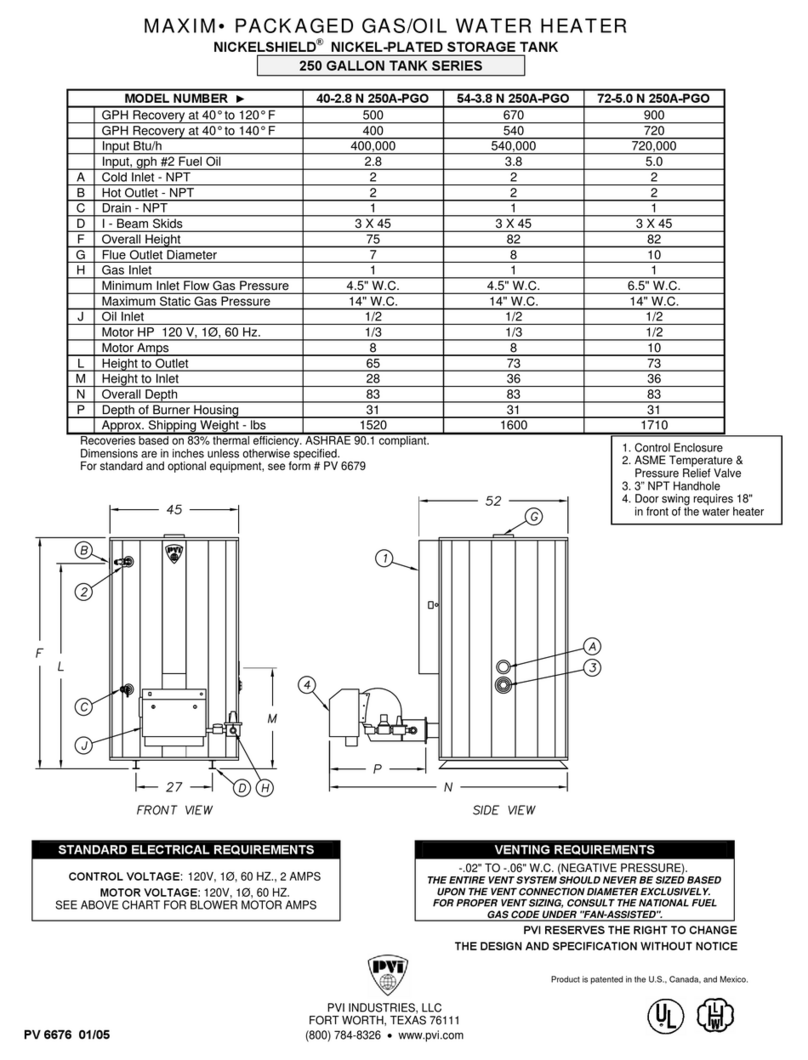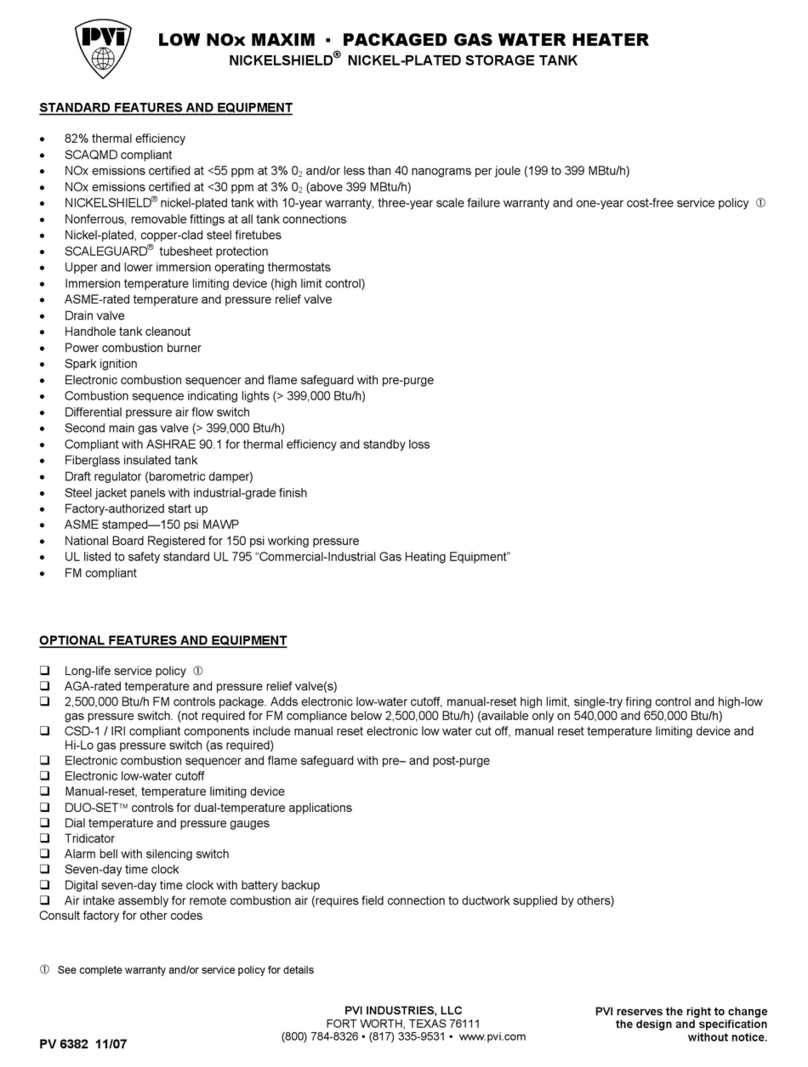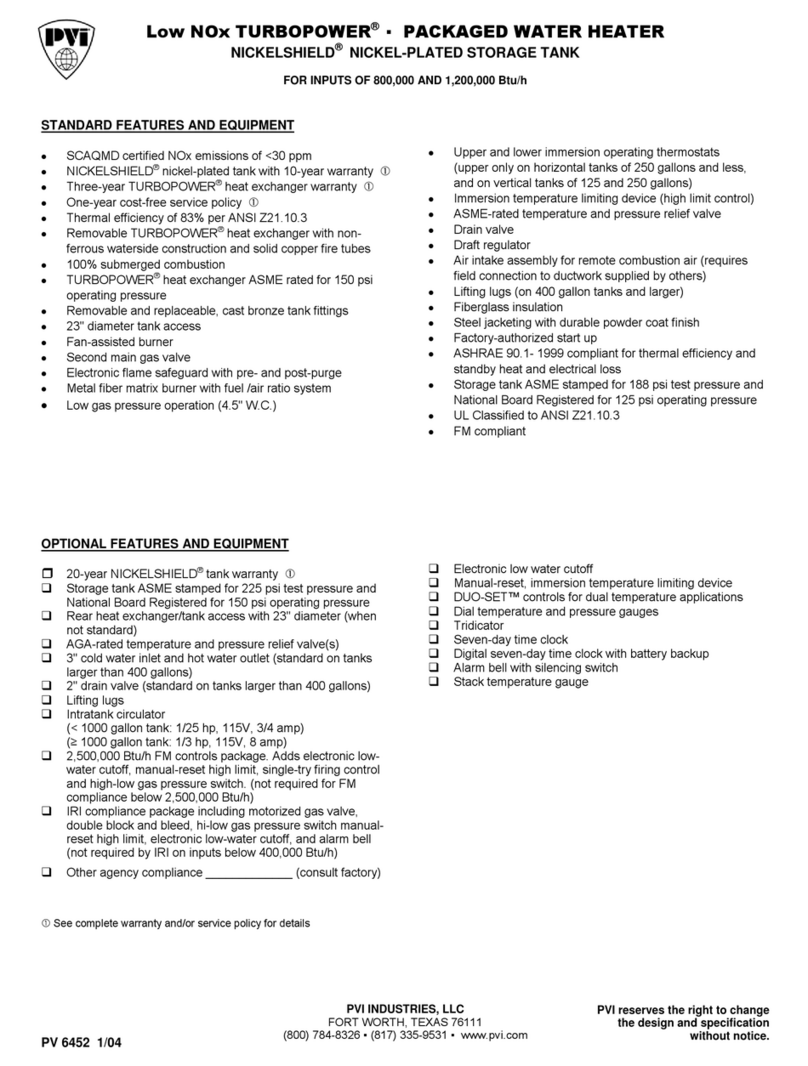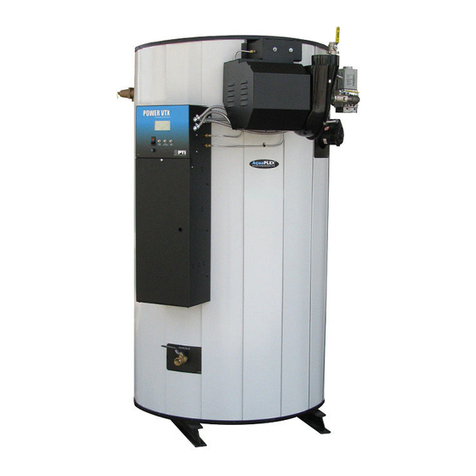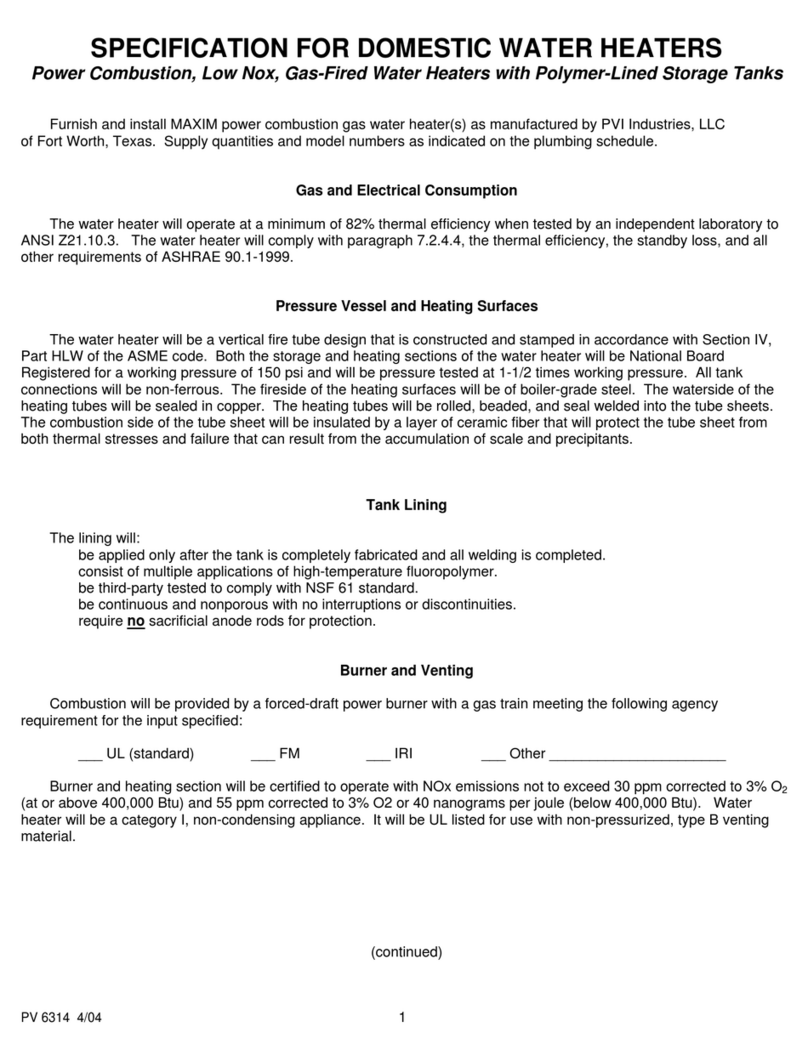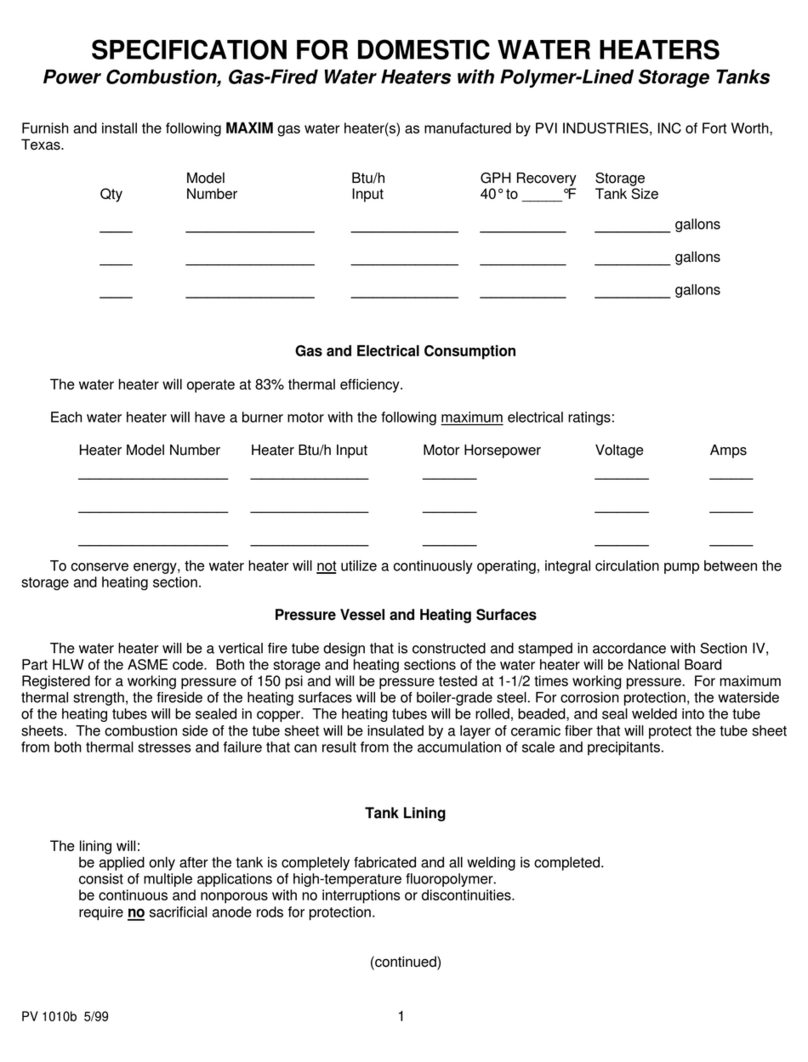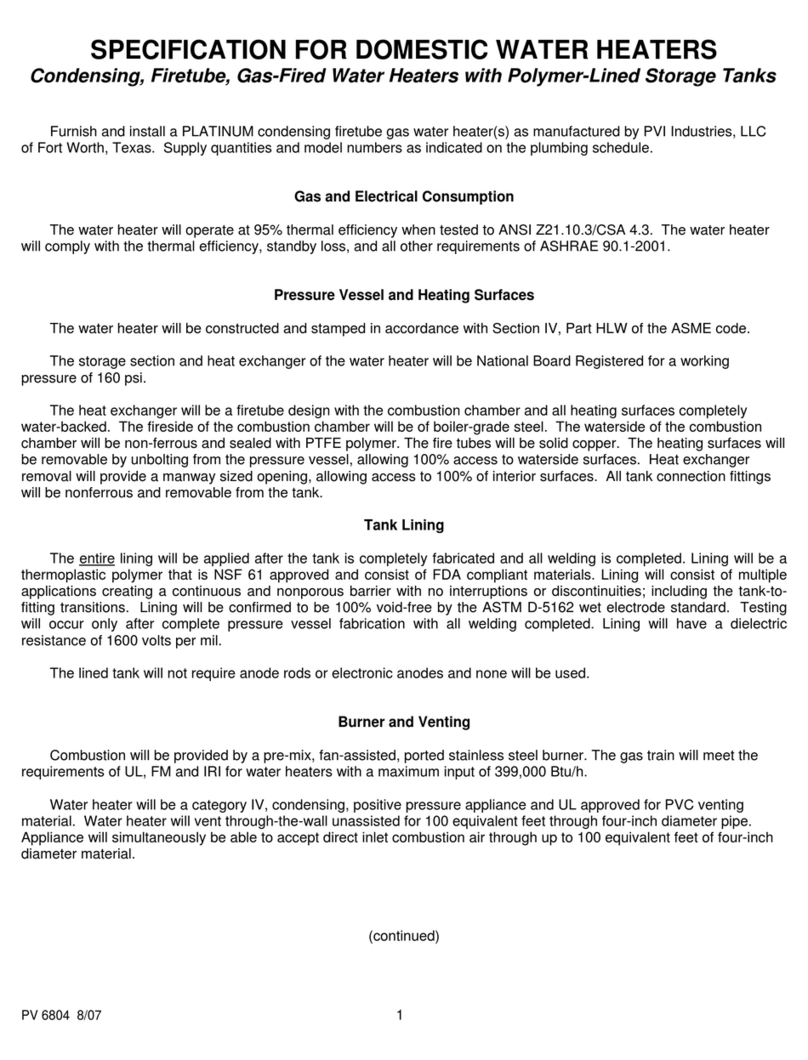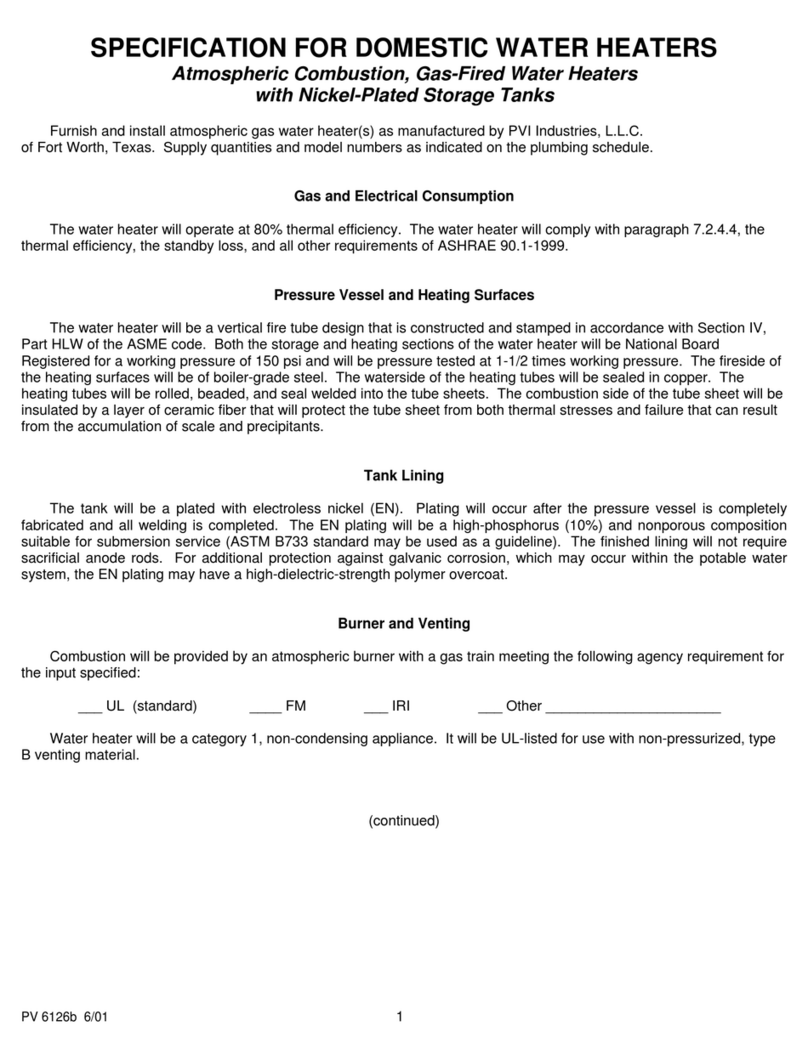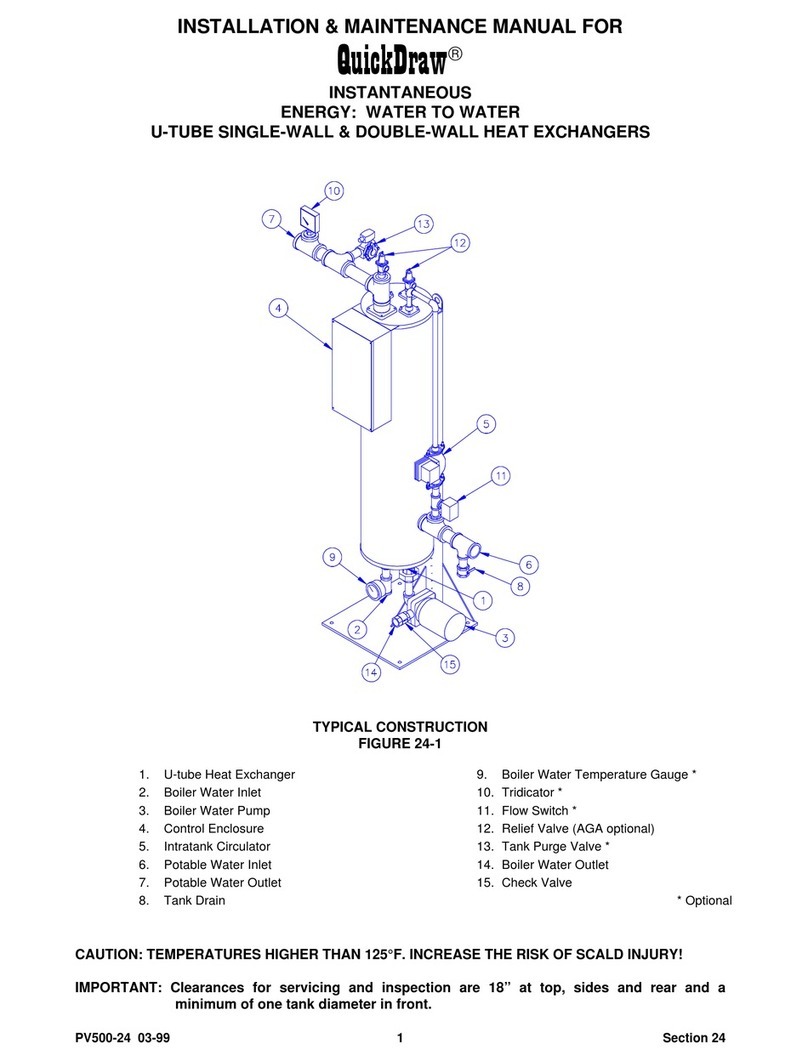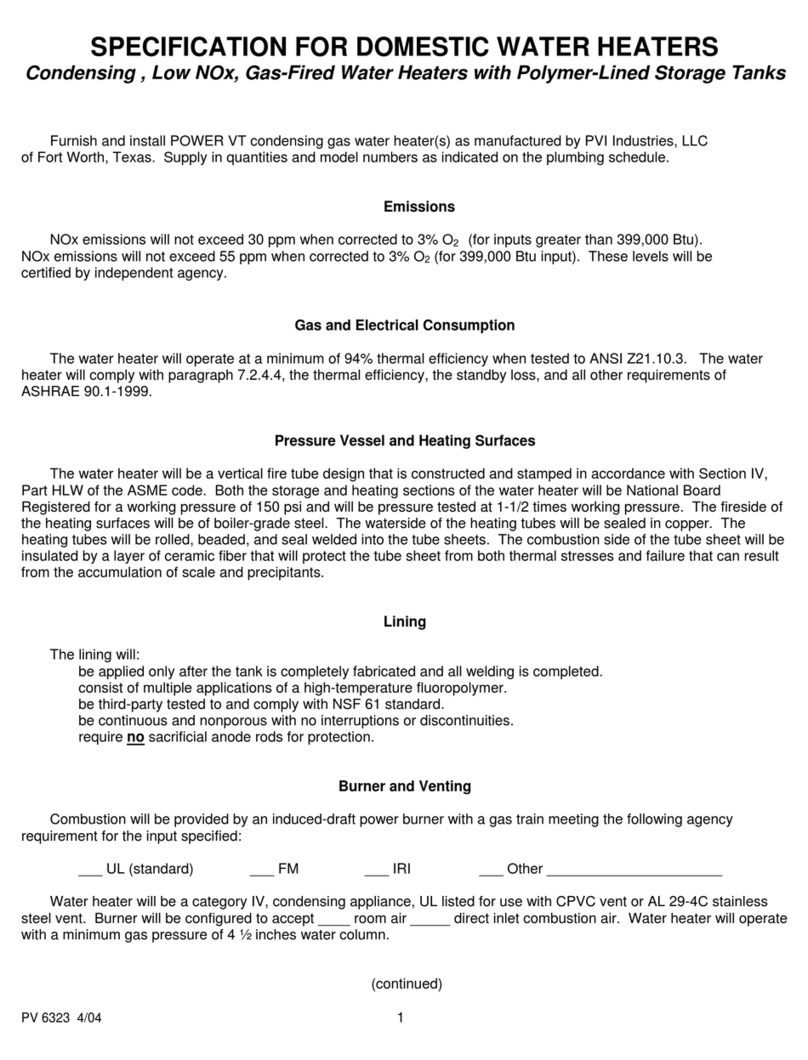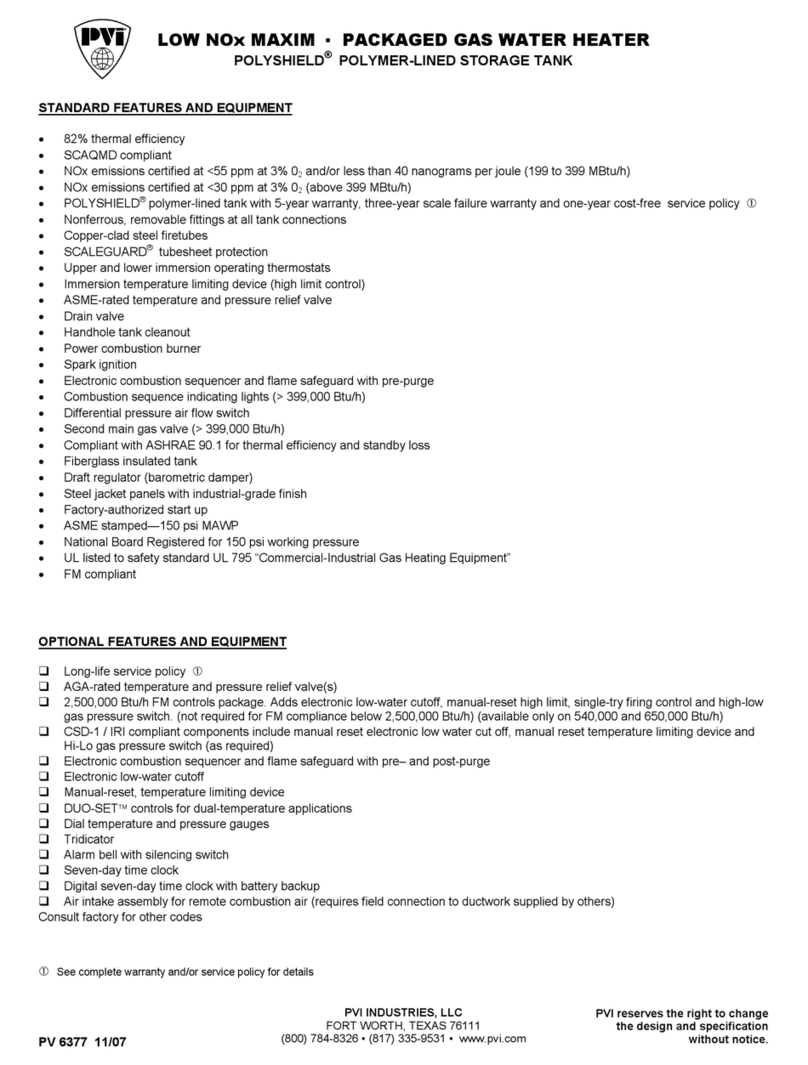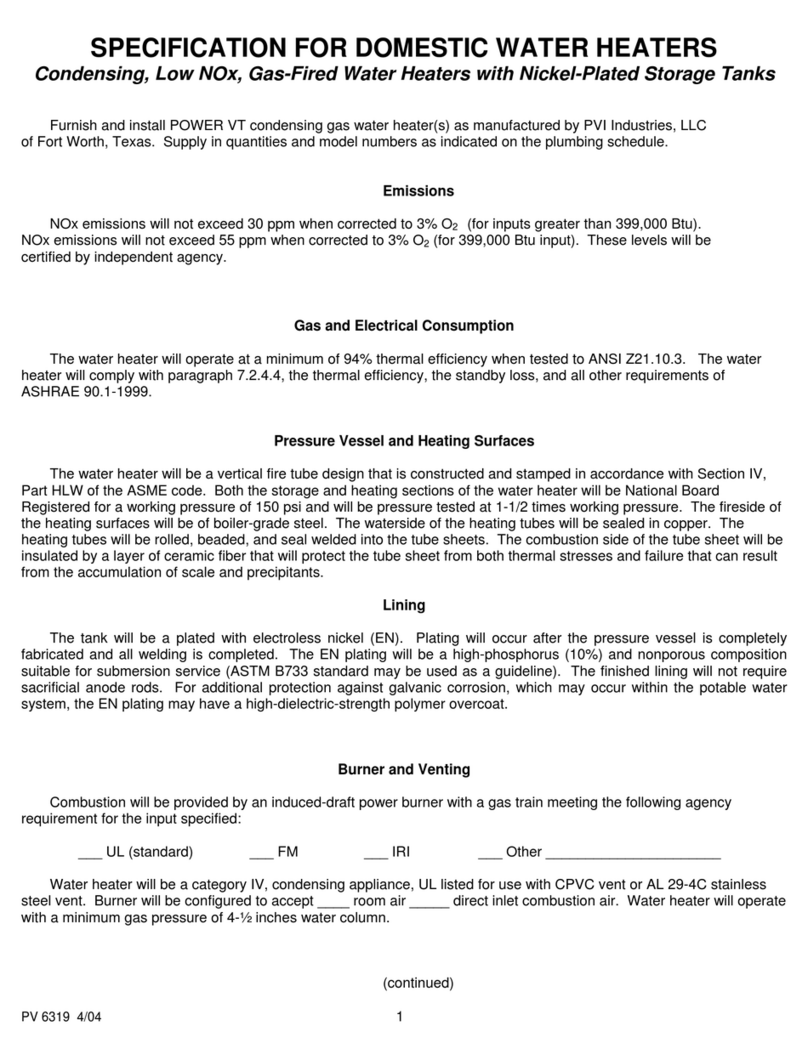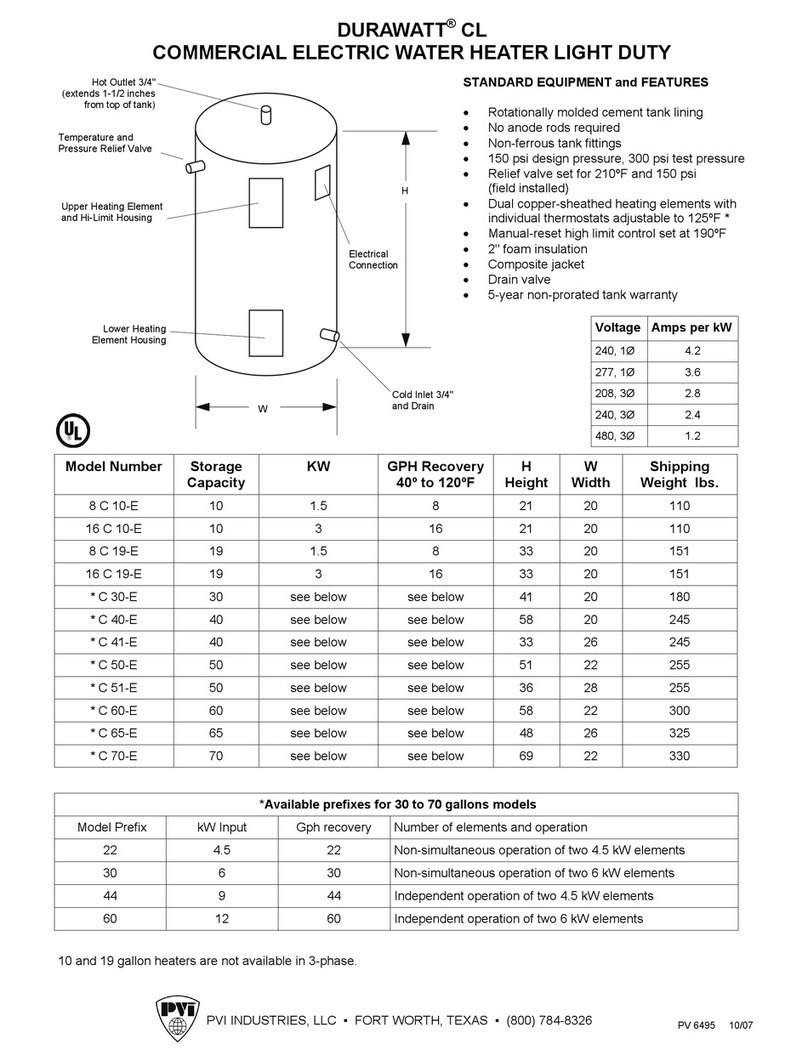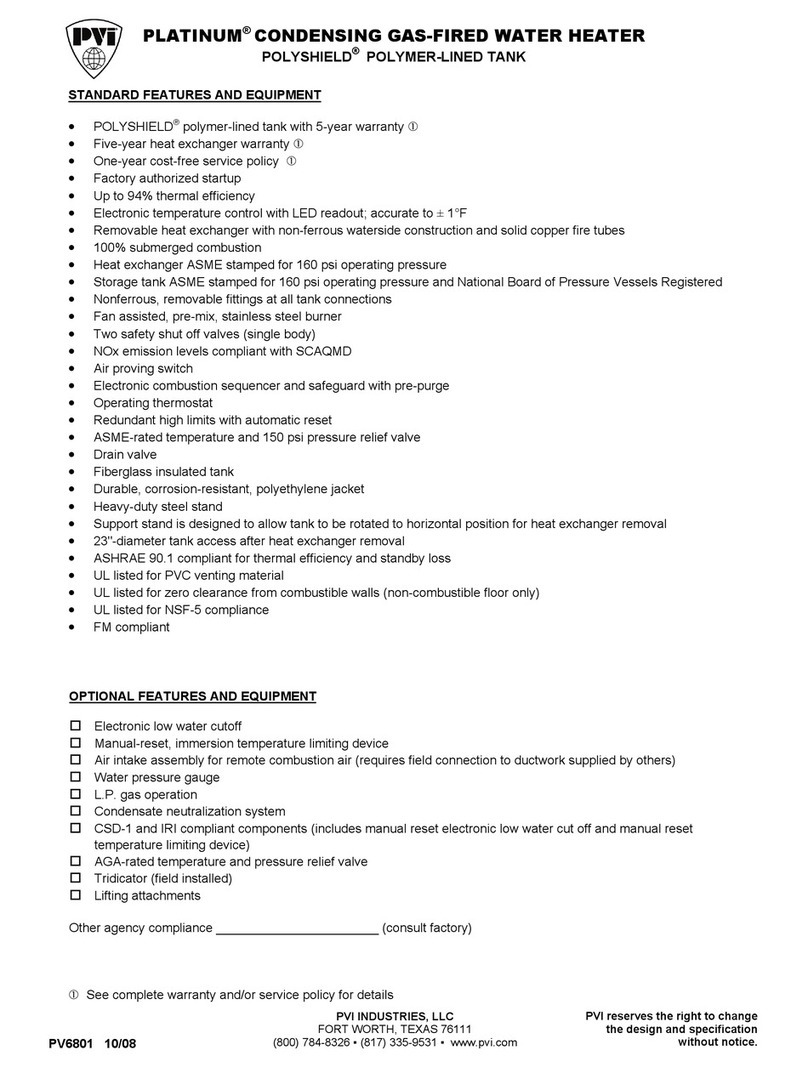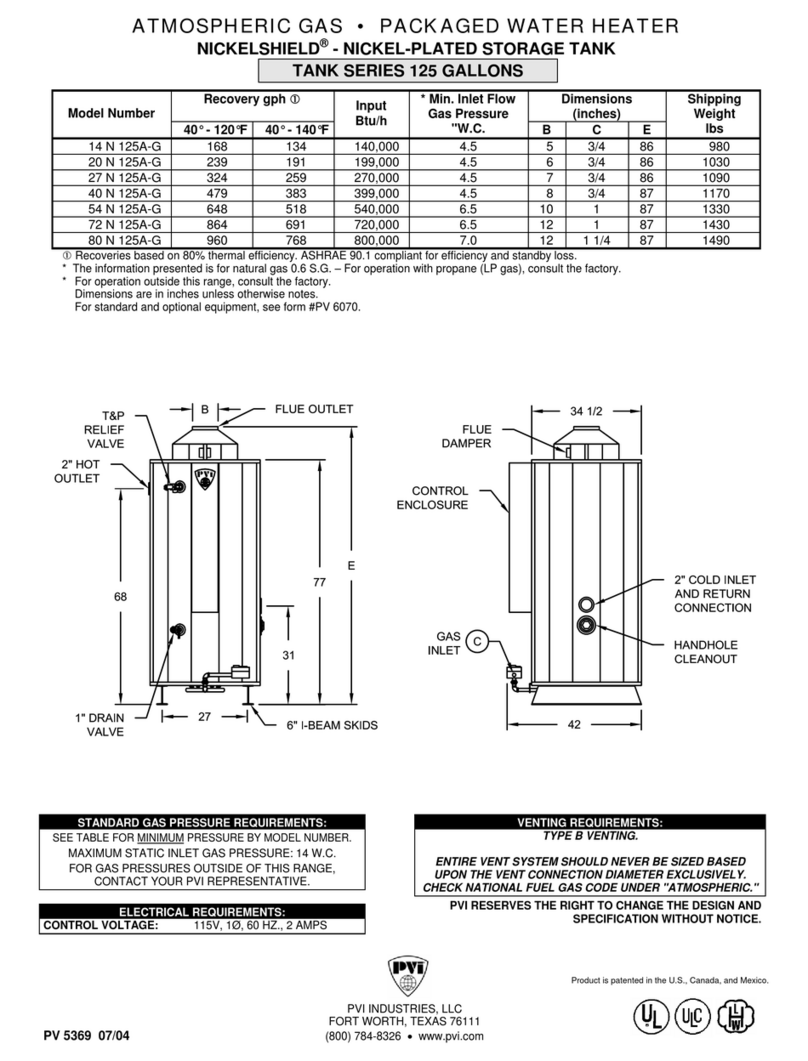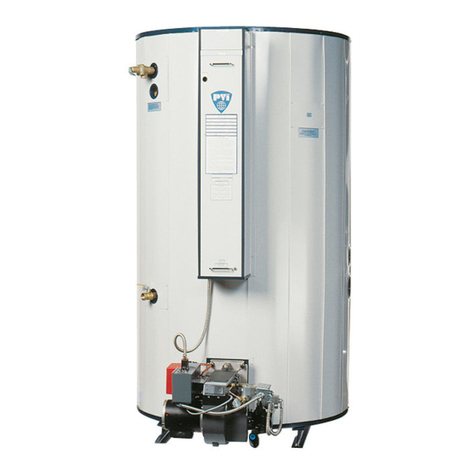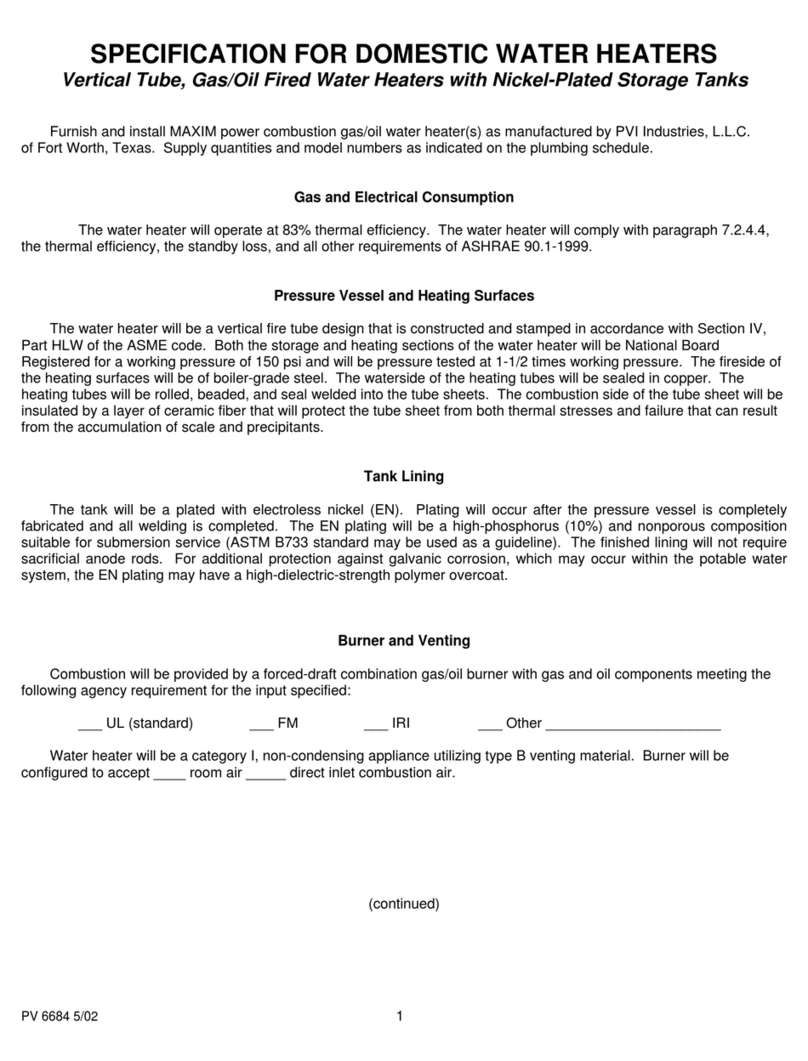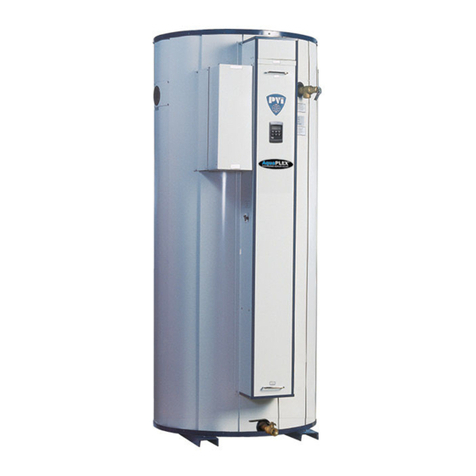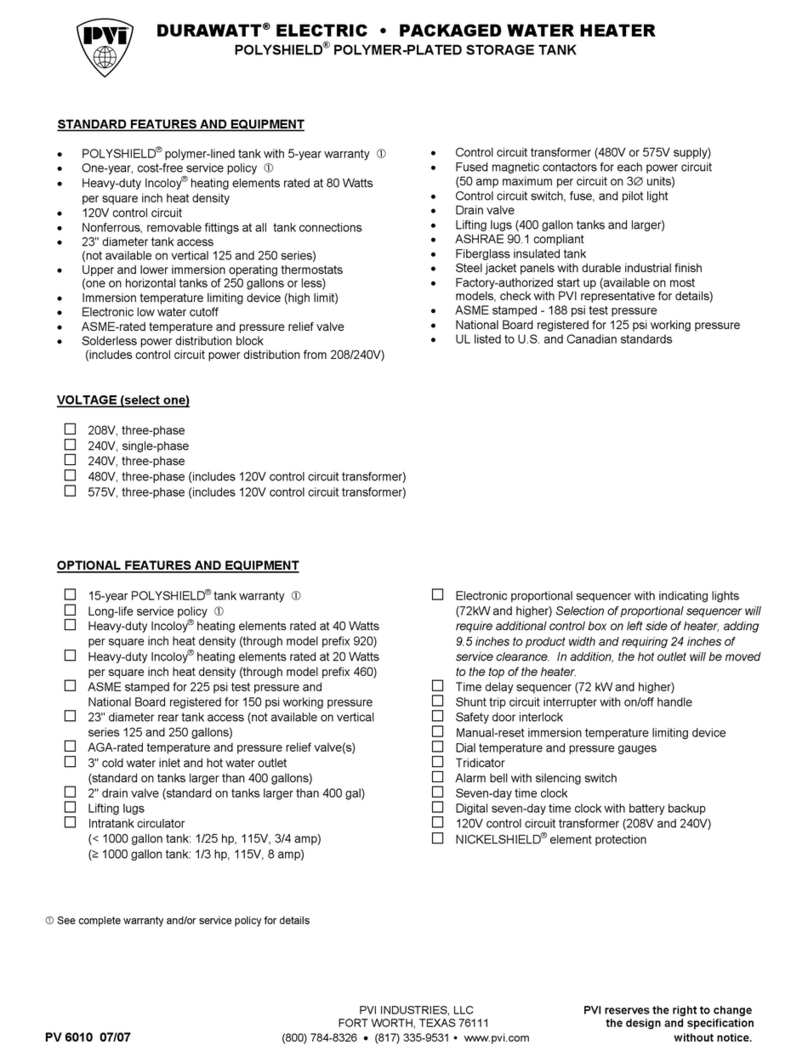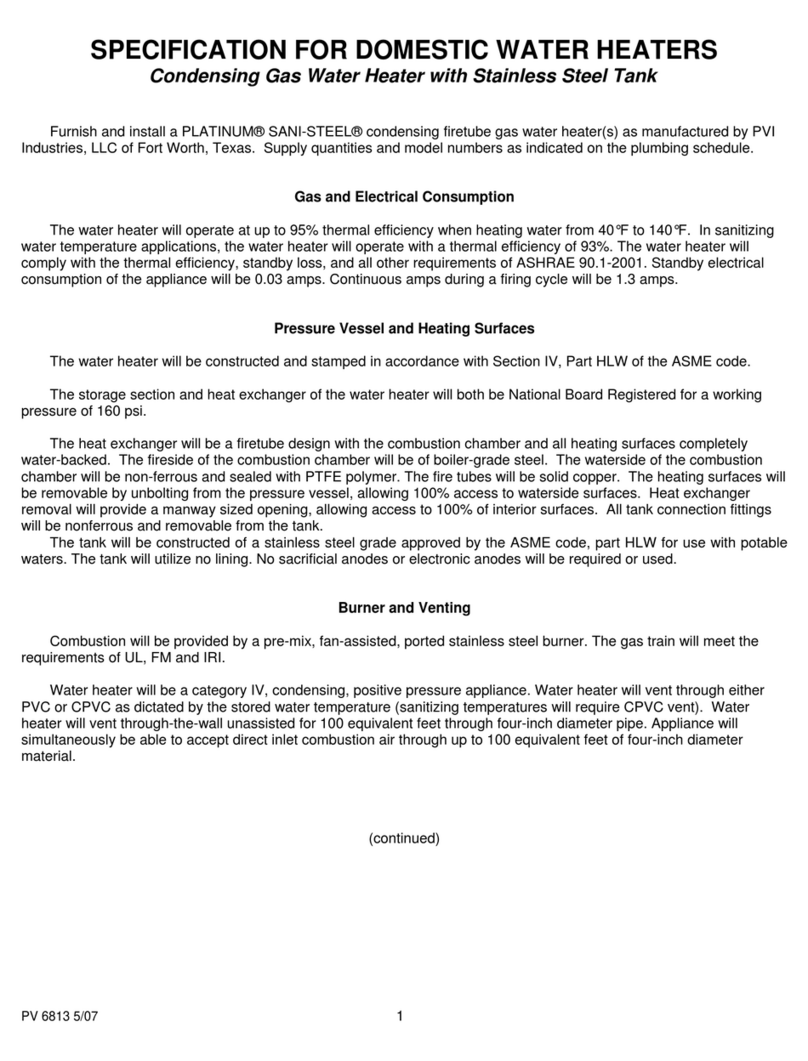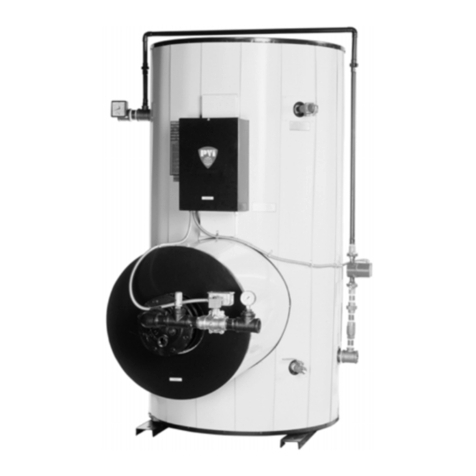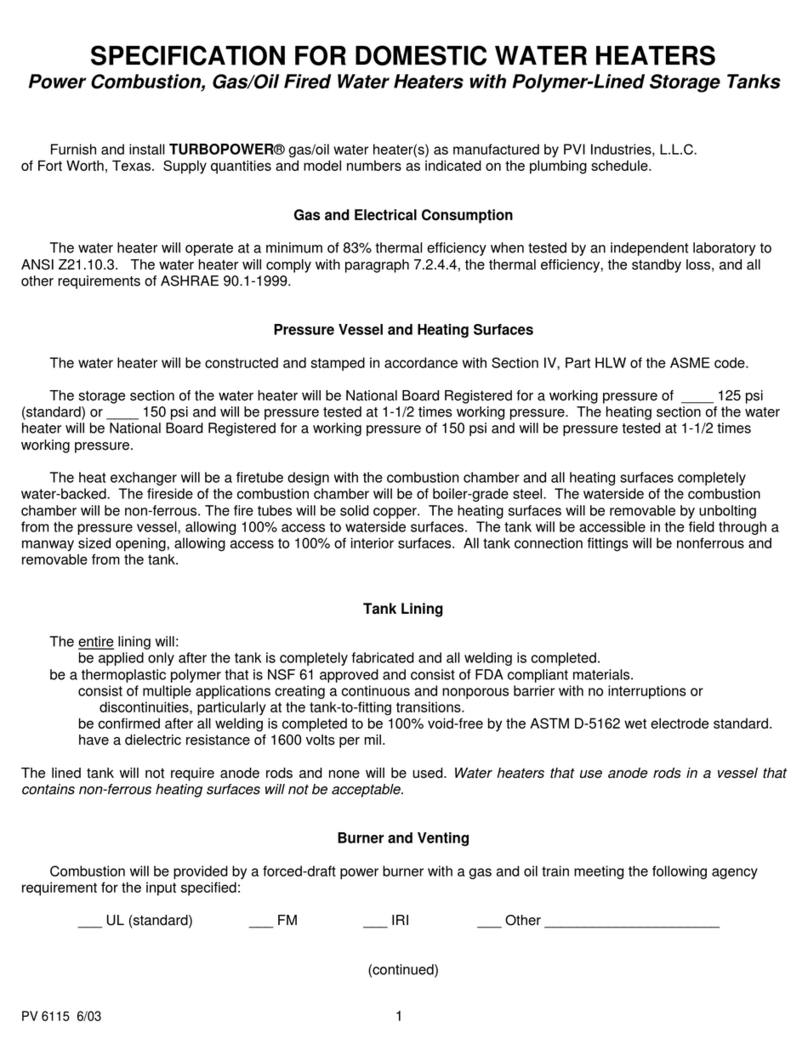
DURAWATT®ELECTRIC WATER HEATERS
PV500-6 05/13
6
3 WATER HEATER INSTALLATION
3.1 Checking Equipment Before You Install
Inspect the unit completely upon receipt from the freight carrier before signing the bill of lading. Inspect the
appliance and all accompanying parts for signs of impact or mishandling. Verify the total number of pieces shown
on packing slips with those actually received. Contact the freight carrier immediately if any damage or shortage is
detected.
3.2 Codes
The equipment must be installed in accordance with those installation regulations in force in the local area where
the installation is to be made. Authorities having jurisdiction must be consulted before installation is made. In the
absence of such requirements, the installation shall be in accordance with the instructions in this manual, appliance
markings and supplemental instructions and in compliance with the latest edition of the National Electrical Code,
NFPA-70. Where required by the Canadian authority having jurisdiction, the equipment must be installed in
accordance with the latest edition of the Canadian Electrical Code, C22.1 and applicable provincial regulations. All
appliances conform to the current edition of the ASME Boiler and Pressure Vessel Code, Section IV, Part HLW or
Section VIII.
3.3 Electrical Requirements
1. Check rating plate on front for correct voltage, phase and amperage. Refer to the wiring diagram for control
components mounted on the heater.
2. Use proper wire size and branch circuit protection as required by the latest edition of the National Electrical
Code, NFPA-70 and state and local codes or in Canada, as required by the latest edition of the Canadian
Electrical Code, C22.1 and provincial and local codes. The PVI electric water heater specification sheets show
the number and size of power connectors furnished with the heater for minimum 90°C copper connecting wire.
3. Use proper wire size for the ground connection. Attach to the bottom ground terminal connection on the terminal
block assembly marked with decal "GR".
4. Connect supply feeders to the distribution block (or circuit interrupter if furnished) inside the electrical enclosure
on the heater.
IMPORTANT: Check all wiring connections in heater and element enclosure to assure tightness prior to energizing.
NOTE: Use only copper wire of proper sizing for incoming service. Damage resulting from use of aluminum wiring is
excluded from coverage under the warranty of this unit.
Utiliser du fil de cuivre de la taille appropriée pour le service électrique entrant. Les dommages résultant de
l'utilisation de fil d'aluminium seront exclus du champ d'application de la garantie de cet appareil.
3.4 Location
1. Locate the unit in a clean and dry area as close as possible to the greatest hot water usage and as near to
electrical power as practical.
2. Install the unit on a firm, level foundation.
3. Locate the foundation on a pitched floor near a suitable drain, or make other provisions to prevent contact to
areas of the building subject to water damage should the water heater or a water connection leak. The drain
must be sufficient to contain water in excess of 210°F.
3.5 Installation
WARNING: Use industry standard safe rigging methods when attempting to lift or move this product.
Failure to follow these instructions could result in property damage, serious injury or death. One common
method includes the use of straps and spreader bars, lifting from the water heater base skid assembly.
1. Check the data decal on the heater. Be sure the electrical supply is adequate for the installation.
2. Carefully remove all shipping supports and bracing. (Float type devices have shipping plugs blocking the float).
3. Install shut-off valves and unions on the inlet and outlet water piping for servicing. Use caution when threading
pipe nipples into tank connections to prevent cross threading, or over-tightening. Always use a back-up wrench
on tank nipples when tightening unions, valves, etc.
